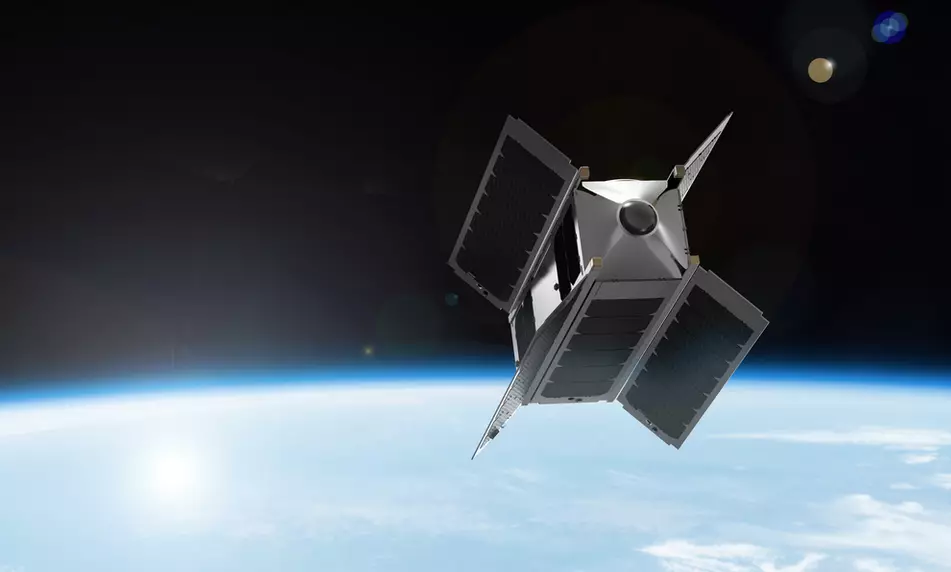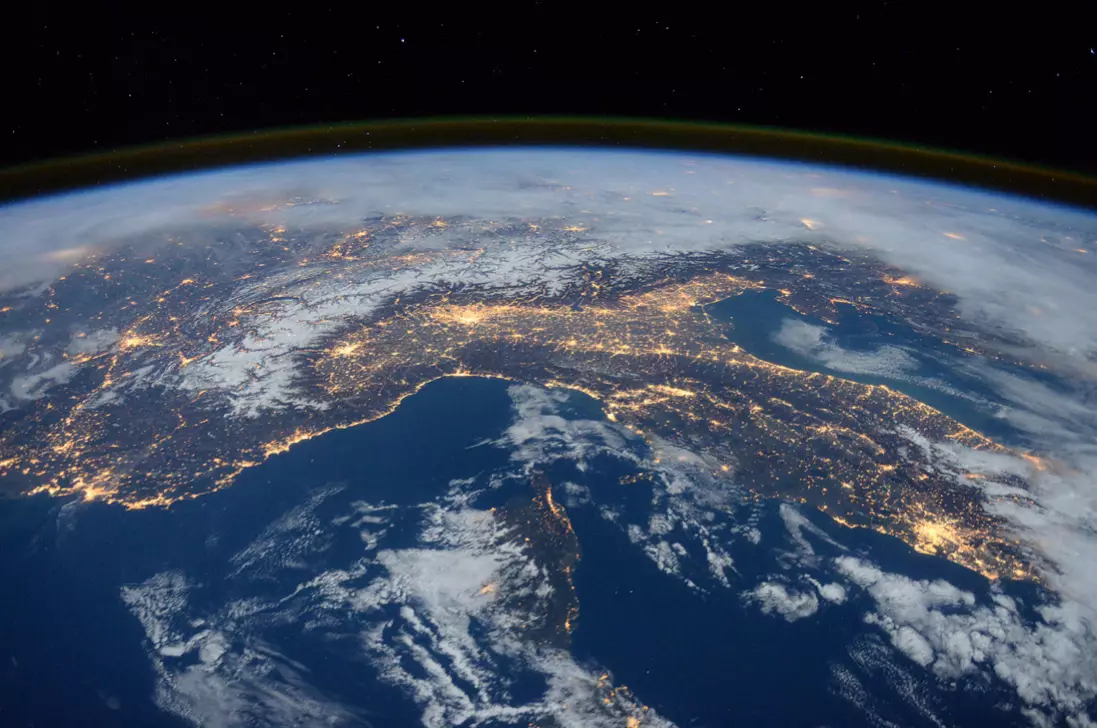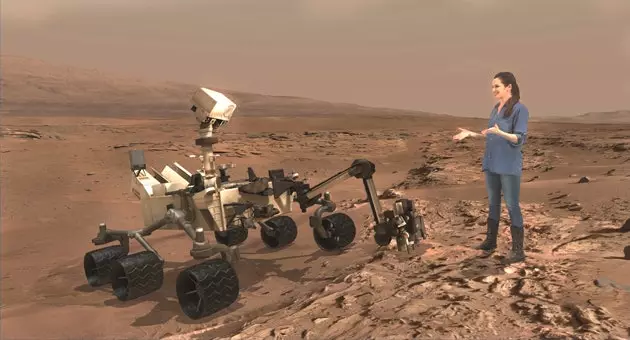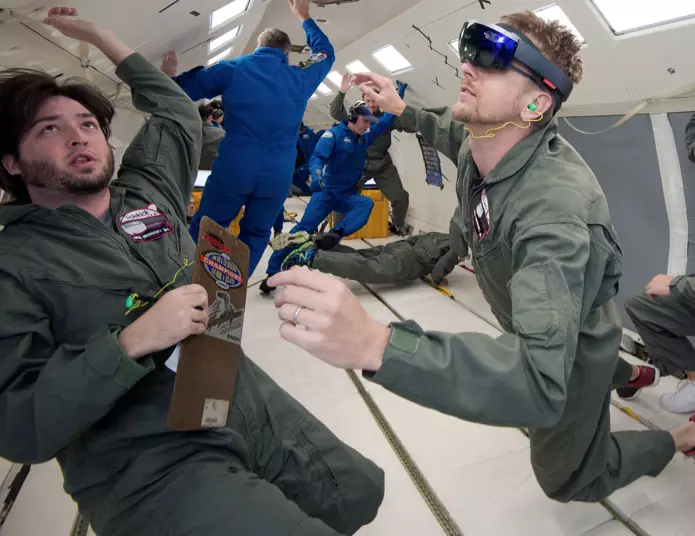
Live the space race from home
Travel to space and discover how does it feel to float without gravity It's one of those wishes we all share. For this reason, we would like to put ourselves in the shoes of Sandra Bullock while we contemplate her adventures in Gravity, we fantasize about accompanying Matt Damon on the red planet in The Martian and we are excited to hear the blue danube when we see a spaceship in the already mythical 2001: A Space Odyssey.
Soon we will not only be able to dream of moving into space, but we will live an immersive experience in it . In June 2017 , virtual reality headsets and goggles — Google's cheap Cardboard, for example — will allow us to travel to space at any time of the day, even when we're on the ground.
It will be on that date when the virtual reality platform SpaceVR launch the first satellite equipped with a virtual reality camera. Just as there are already applications that allow you to travel to Petra, Sydney or the Himalayas thanks to this technology, there are also initiatives for us to give a 360º garbeo through space.

The first satellite equipped with a virtual reality camera
CONTEMPLATING THE BLUE PLANET WITHOUT MOVING
Take to space a circular structure with 12 cameras that will record, even in three dimensions, 360º videos from the International Space Station. This was the first objective of SpaceVR, which last year launched an ambitious campaign in kickstarter in which he asked 500,000 dollars (446,000 euros) to patrons . He failed to raise that amount, but a few months later he repeated the attempt requesting a fifth of the budget. The move turned out better for them and, in addition, they raised 1.5 million dollars (1.34 million euros) in a round of financing.

Contemplating the Blue Planet without moving from home
Thanks to this, they have announced the next release of overview 1, a satellite that will capture space in 360º —yes, in 2D— and in high resolution with its 4K sensors. For this original mission, it has reached an agreement with ** NanoRacks **, the company that runs the commercial laboratory of the International Space Station, to deploy this satellite in low Earth orbit next year.
In this way, Overview 1 will allow us to contemplate every moment of what happens on Earth from a different perspective. As if it were the Netflix of space, the company is already offering subscriptions, both annual and ad eternum, to enjoy its new virtual reality channel from which to see the blue planet in a unique way.
**WALKING THROUGH MARS (AND RESEARCHING AT THE SAME TIME) **
The SpaceVR initiative is not the only one that wants to transport us to space through virtual reality. The NASA wants us to become Mark Watney, the character played by Matt Damon in The Martian, from the Florida Kennedy Space Center and with the help of HoloLens augmented reality glasses.
There will open its doors soon exhibition Destination: Mars , which plays with mixed reality. Based on the information they receive from the rover curiosity, they have created a virtual reconstruction of the Martian surface with which visitors can interact. In addition, they have added an augmented reality varnish: it is a hologram of Buzz Aldrin himself who directs the tour.
In reality, the project of the US space agency is much more ambitious than that of that sample directed by the famous astronaut of the apollo 11. Onsight , the software that has made this exhibition possible, is allowing NASA scientists explore Mars, as if walking on its ground, from anywhere.
Combining the holograms and the images sent by the rover and other satellites, these researchers get " geological superpowers ”, as they have been called by Alexander Menzies, the developer leading the efforts to r virtual reality at NASA . In addition, Onsight facilitates collaborative work: everyone has their hologram, so they can meet virtually on Mars to discuss.

From your house and on Mars
Although it has become fashionable now, the truth is that the US space agency has been experimenting with virtual reality for years. The Lyndon B. Johnson Space Center in Houston It has had a virtual reality laboratory since the 1990s. Astronauts have been using this technology for some time in their training before traveling to space.
In fact, one of their programs, DOUG, helps them go on a spacewalk so that the first time they get to space, they feel like they've been there before. In addition to wearing helmets, motion sensors and haptic gloves help them transport to the International Space Station.
Precisely a few months ago, the astronauts at this research center received Microsoft HoloLens , which could help them work with the staff on Earth — the operators see the same thing as the crew, providing guidance in real time — or receive a manual of instructions on the useful with those who work through holograms.

Emulating NASA training
Meanwhile, on Earth, more and more companies are interested in exploring new possibilities for virtual reality to bring us closer to space exploration, beyond the pioneering initiative of Space VR . Until now, 360º videos , like the one NASA offers of Mars from the perspective of Curiosity, allowed us to walk around a scene without moving through it.
**The company Lytro ** has managed to improve the experience with an innovative virtual reality short film that takes us back to the legendary moment when Neil Armstrong stepped on the Moon, although the video plays with the hypothesis that it was all a montage. The scene is obviously a recreation, but the experience is more immersive than usual.
If the viewer leans forward, he makes both the perspective of the ship and the light adapt to his position while enjoying this 45-second short that is not yet available to the public, but that supposes a small step towards a greater virtual immersion.
VFX Build of "Moon" by Lytro from Lytro on Vimeo .
If all goes according to NASA's plans, An astronaut could walk on Mars in the year 2030. It is possible that on that date it will no longer be necessary to design any subsequent virtual recreation of such a historic moment: we could all enjoy it, live, as if we were also experiencing it in the first person. Virtual reality can help us achieve that desire to take a journey through space without moving from the sofa.
Follow @CristinaSanzM
Follow @HojaDeRouter
